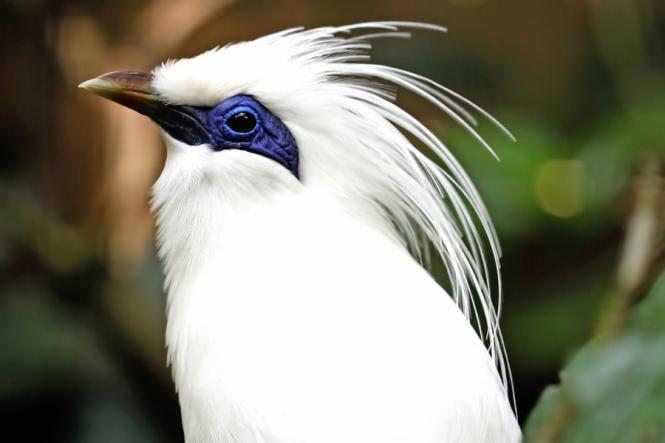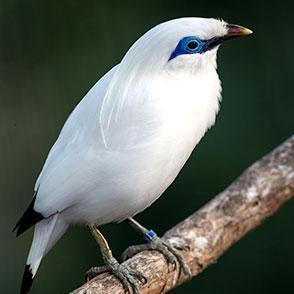
Leucopsar rothschildi
SUBFAMILY
Sturninae
TAXONOMY
Leucopsar rothschildi Stresemann, 1906.
OTHER COMMON NAMES
English: Bali starling, Rothschild’s myna, Rothschild’s starling,
white starling; French: Martin de Rothschild; German: Balistar;
Spanish: Mainб de Bali.
PHYSICAL CHARACTERISTICS
9.8 in (25 cm). White body, feathers of lower forehead are
bristle-like, feathers of nape and crown long and slender to
form a crest that can be raised, especially in males; white tail
and primaries have black tips; bright light-blue bare skin
around eye; bill gray, yellow towards tip. Juveniles similar to
adults, sometimes with gray wash on back and cinnamon tinge
on wings.
DISTRIBUTION
Northwest Bali, Indonesia.
HABITAT
Open woods with grassy understory.
BEHAVIOR
Strongly arboreal, but will come to the ground for food, water,
and bathing; can be gregarious outside of breeding season.
FEEDING ECOLOGY AND DIET
Diet includes seeds, fruit, insects and other invertebrates and
small vertebrates.
REPRODUCTIVE BIOLOGY
Breeds during the rainy season (January–March); cavity nester
that uses old woodpecker holes or nest boxes. Clutch includes
two to three pale blue eggs; incubation mostly by female lasts
12–14 days; young fed by both parents and fledge at 21–28
days; parental care continues for about five weeks.
CONSERVATION STATUS
Listed under CITES Appendix I; Critically Endangered under
IUCN criteria. In 1925, hundreds could be seen; by 1976, 127
were counted; as of 1998, only 14 birds were known in the
wild. Many zoos have this species, and there are strong captive
breeding programs, but habitat deterioration and poaching for
the pet trade continue to threaten the species.
SIGNIFICANCE TO HUMANS
Valued in the pet trade.
Photo Gallery of - Bali myna




 Animalia Life
Animalia Life